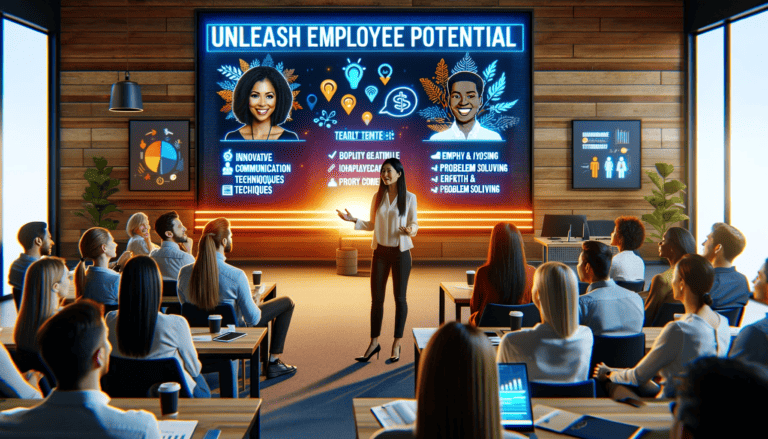Customer Loyalty and Retention Strategies: Boosting Repeat Business Effortlessly
Cultivating strong customer loyalty and retention is a cornerstone of business success. In today’s competitive markets, companies recognize that keeping existing customers happy is just as crucial as acquiring new ones. They understand that customer loyalty doesn’t just happen by chance; it is the result of strategically designed practices that make customers feel valued, understood, and connected to the brand. Moreover, a loyal customer base can significantly boost a company’s financial performance, as they often purchase more and advocate for the brand to others.

Businesses implement a variety of customer retention strategies to maintain a lasting relationship with consumers. This includes ensuring a top-notch customer experience, leveraging personalized communication, and rewarding customers for their loyalty. With advancements in data analytics, companies can now tailor their approaches to the individual preferences of their customers, fostering an even deeper sense of loyalty. In this dynamic, it becomes increasingly important for businesses to adapt and refine their retention methods to keep pace with evolving customer expectations and a rapidly changing marketplace.
The Importance of Customer Loyalty
In the world of business, the loyalty of a customer is a north star guiding companies toward sustained profitability. It’s not just about making a sale but nurturing a lifelong relationship.
Understanding Customer Retention and Loyalty
Customer loyalty emerges from satisfaction, trust, and the value customers associate with a brand. It’s more than a repeat purchase; it’s an emotional bond. **
Customer retention
**, on the other hand, is the outcome of this bond – the ongoing choice of a customer to stick with a company’s product or service. It is essential to distinguish between the two for a simple reason: retention is measurable in repeat transactions, whereas loyalty refers to the customer’s attitude and sentiment towards the brand.
The Impact of Retention on Revenue
The tie between customer retention and revenue is straightforward: loyal customers tend to spend more over time, raising lifetime value significantly. According to Forbes, a moderate increase in customer retention can balloon revenue by up to 95%. Retention catalyzes a reliable stream of income, and loyal customers often become brand advocates, indirectly powering new customer acquisition.
Evaluating Customer Retention Metrics
Understanding and analyzing customer retention metrics is crucial for any business interested in maintaining a strong customer base. It’s not just about tracking numbers; it’s about interpreting what they indicate about business health and customer loyalty.
The Role of Customer Retention Rate
Customer Retention Rate (CRR) is a pivotal metric that quantifies the percentage of customers a business has retained over a specific period. It’s pivotal because companies can’t sustain themselves without a loyal customer base. To calculate CRR, one can use the formula: [ (E-N)/S ] x 100 = CRR, where E is the number of customers at the end of the period, N is the number of new customers acquired during the period, and S is the number of customers at the start of the period.
Measuring Success with Retention Metrics
A variety of metrics are employed to gauge customer retention. Besides CRR, businesses often monitor the average purchase frequency or the lifetime value of a customer. These figures give insight into how often customers return and how valuable they are over time. Tracking these can help a company identify trends, like whether a recent change has positively or negatively affected loyalty.
Benchmarking Against Industry Retention Rates
Finally, to truly understand one’s customer retention success, they must compare their retention rates with industry retention rates. Benchmarking against the industry provides context to the numbers — for instance, an 85% retention rate might be fantastic in one industry but below average in another. Businesses can usually find benchmark reports or industry studies to help them understand where they stand.
By keeping tabs on these metrics and comparing them to industry standards, businesses can have a clear picture of their standing and identify areas needing improvement in attracting and retaining customers.
Strategies for Enhancing Customer Retention
To keep customers coming back, businesses must focus on personalization, building trust, and effectively utilizing feedback. These approaches are not just good practices; they are the cornerstone of customer retention strategies.
Personalizing the Customer Experience
Customers feel valued when businesses treat them as individuals rather than numbers. One effective strategy involves creating customer profiles to deliver tailored experiences. This personal touch can transform a one-time buyer into a loyal advocate. For instance, online platforms can leverage the power of data personalization to recommend products that align with past purchasing behavior or browsing history.
Building Trust Through Transparency
Transparency is critical in fostering trust between a customer and a company. Businesses that are open about their processes and business practices tend to develop stronger, trust-based relationships with customers. For example, clear communication about pricing, service expectations, and company values can cultivate a sense of reliability and transparency, encouraging customers to stay long term.
Effective Use of Customer Feedback
Listening to customers is crucial for growth and retention. By actively soliciting and responding to customer feedback, companies show that they value their customers’ opinions and are willing to make changes. Providing platforms for reviews and surveys allows customers to voice their experiences, and businesses can then use this feedback to refine their services and address any issues promptly.
Leveraging Technology and Tools
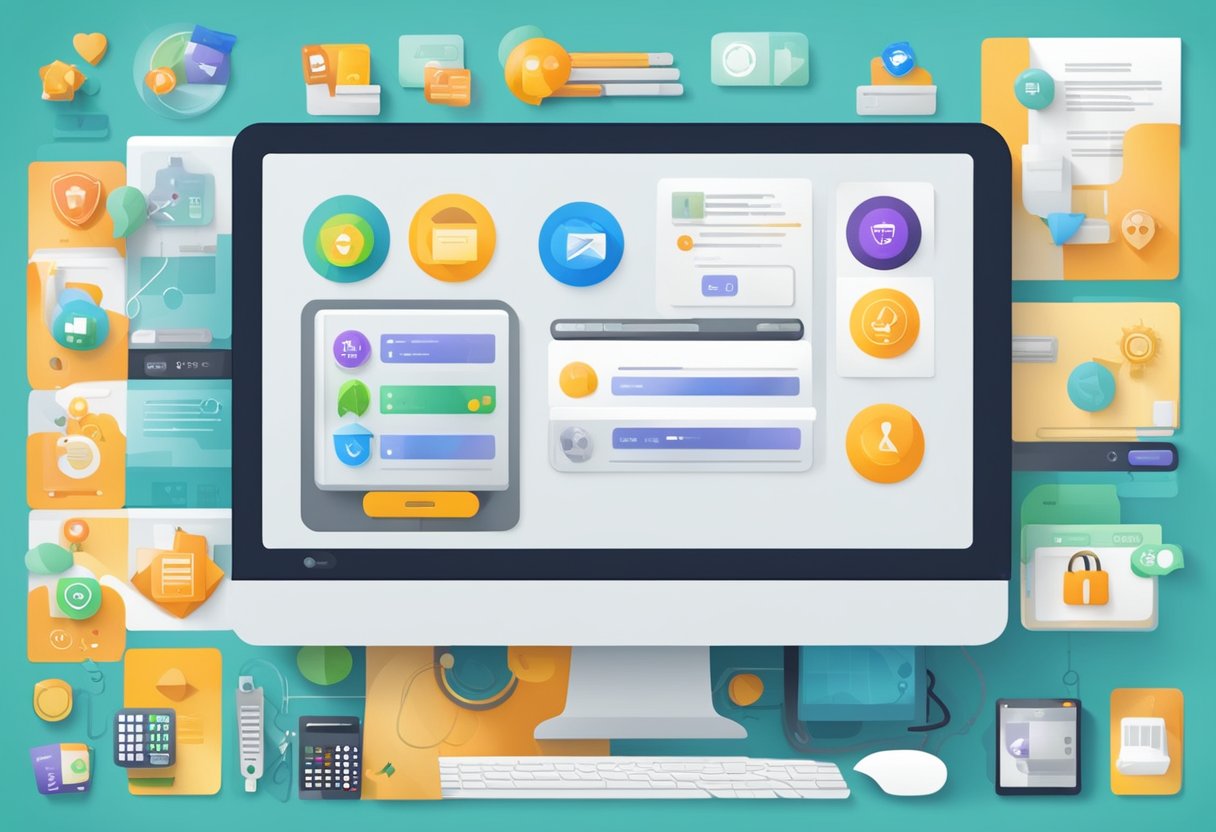
The modern landscape of customer loyalty is intricately entwined with technology. Savvy businesses use an array of digital tools to enhance communication, gather insights, and provide real-time support.
Automation for Better Communication
Businesses streamline their outreach efforts through automation tools. For example, email marketing software can segment customers based on their purchase history and send personalized messages. Companies like Velaro harness the power of artificial intelligence (AI) to keep communication relevant and engaging, fostering stronger relationships with customers.
Analytics Tools to Gain Customer Insights
Analytics tools play a pivotal role in understanding customer preferences. By analyzing patterns in data, companies are able to tailor their services and products to better match customer needs. This leads to increased satisfaction and loyalty. Tools such as data analytics software help businesses segment customers and predict future buying behaviors with greater accuracy.
Utilizing Chatbots and Live Chat for Instant Support
Customers expect immediate assistance, and many businesses are meeting this demand through chatbots and live chat services. These tools provide instant support, answer common queries, and even handle complaints, thus keeping customers engaged. The integration of AI-powered chat solutions means that even complex issues can be resolved quickly, as shown by businesses highlighted on Forbes, further solidifying customer trust and loyalty.
Loyalty Programs: Rewarding Repeat Customers
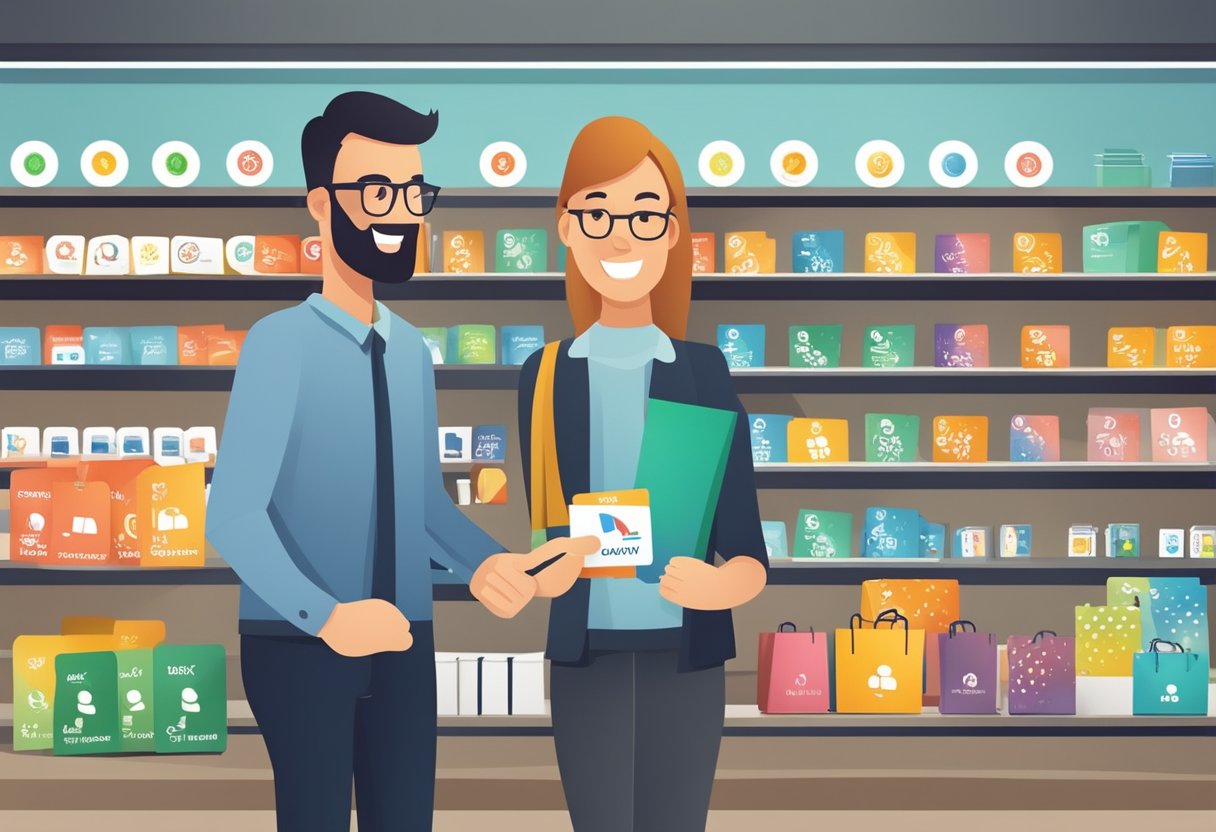
In today’s competitive market, loyalty programs are quintessential for businesses aiming to retain customers and foster a sense of reciprocity. They’re not just a scheme; they’re a strategic tool for customer engagement.
Designing an Effective Loyalty Program
An effective loyalty program starts with understanding customer behavior and preferences. Forbes suggests that building a customer profile can lead to more targeted and successful loyalty strategies. A clear structure is key; it might involve a point system, tiers, or exclusive perks. Businesses should ensure that joining the loyalty program is a straightforward and attractive proposition for the customer.
Above all, transparency and simplicity are paramount. Customers are more likely to engage with a program when they can easily understand how to earn rewards and what benefits they are getting. Moving beyond simple transactions, these programs can include personalized offers or early access to new products or services, enhancing the perceived value for repeat customers.
The Power of Reciprocity and Rewards
The principle of reciprocity plays a critical role in customer loyalty. When customers feel appreciated through rewards, they are more inclined to continue their patronage. HubSpot highlights the importance of providing multiple opportunities for customers to enroll and earn rewards through various channels. Rewards can come in many forms: discounts, free merchandise, exclusive services, or redeemable points.
The impact of rewards on loyalty is multiplicative. They not only encourage repeat purchases but can also turn customers into brand advocates. An appealing loyalty program can be an efficient means to differentiate a brand in the market, cultivating long-term relationships with customers.
Maximizing Social Media for Customer Retention

Social media isn’t just for attracting new customers; it’s also a powerful tool for keeping the existing ones engaged and satisfied. With the right strategies, businesses can use social platforms to foster a community around their brand, leading to enhanced customer loyalty.
Engaging Customers on Various Platforms
Businesses need to recognize that their customers are spread out over various social media platforms. Each platform, be it Instagram, Twitter, Facebook, or LinkedIn, has its unique culture and norms. To maximize customer retention, a brand’s presence needs to be adapted to fit each platform’s style while maintaining a consistent brand voice. For instance, Instagram users respond well to high-quality visuals and stories, while LinkedIn users might appreciate more professional content and insights.
Contests and exclusive promotions can be especially effective, as mentioned in Sprout Social, by creating a fun and interactive way for customers to engage with the brand. Whether through user-generated content or branded hashtags, these activities keep the conversation going and make customers feel connected to the brand’s community.
Using Social Listening to Understand Customer Needs
Social listening is an essential strategy for customer retention. By monitoring social media for mentions of their brand, feedback, and broader conversations, companies can gain insights into customer satisfaction and emerging trends. Tools like Sprout Social or Hootsuite can track brand mentions and industry keywords, allowing businesses to acknowledge and respond to customer concerns proactively.
This technique is beneficial for detecting and addressing pain points before they escalate, allowing companies to demonstrate their commitment to customer service. For example, if several customers mention shipping delays on social media, a brand can quickly address the issue and communicate solutions, thus showing the customers it listens and cares about their concerns. This proactive approach is critical for retention and helps build trust between customers and the brand.
Harnessing the Voice of the Customer

Capturing and utilizing the Voice of the Customer (VoC) is a critical component in crafting effective customer retention strategies. It involves actively listening to feedback and leveraging that information to better serve and engage the customer base.
Collecting and Implementing Customer Surveys
Customer surveys are essential in capturing the VoC. They offer a direct line to the customer’s thoughts and needs. To be effective, surveys should be:
- Short: Respect their time with concise queries.
- Relevant: Ask questions that pertain to their experience.
- Incorporating diverse question types such as multiple-choice and open-ended questions can elicit more nuanced responses.
Implementing feedback from surveys is just as important as gathering it. Companies should:
- Analyze the data for trends and areas of improvement.
- Act on the feedback, implementing changes where customer desires align with business objectives.
Showcasing Testimonials and User-Generated Content
Testimonials are powerful endorsements that can sway potential customers. Strategically showcasing them on websites and in marketing materials can:
- Build trust with prospects by presenting unbiased opinions.
- Highlight successful customer cases which can encourage loyalty from existing customers.
User-generated content (UGC) taps into the customer community to contribute to a brand’s narrative. UGC can:
- Build a community around a brand, wherein customers engage not just with the company but with each other.
- Provide authentic voices that resonate more with prospective customers than traditional marketing.
By actively listening through customer surveys and elevating customer voices via testimonials and user-generated content, companies can foster a stronger connection with their customers that extends beyond the transactional.
The Role of Customer Service

The link between exceptional customer service and increased loyalty and retention is undeniable. When businesses prioritize their support services, they see a marked improvement in customer experience, directly influencing retention rates.
Crafting a Customer-Centric Support Approach
Embedding a customer-centric culture is crucial. This means ensuring that every interaction with the customer is guided by an understanding of their needs and delivers a positive experience. Companies strive to provide support that is not just solutions-focused but also empathetic, ensuring customers feel valued and heard.
Training and Development for Customer Service Teams
Ongoing training and development are key in equipping customer service teams with the skills necessary to deliver top-notch service. Teams need regular updates on product knowledge, communication skills, and how to handle challenging situations. A well-trained team can elevate the customer service and support experience, turning even dissatisfied customers into loyal advocates.
Fostering Community and Shared Values
In today’s market, businesses thrive by not just selling products or services, but by creating communities around shared values. This approach deepens customer bonds and boosts loyalty.

Creating Brand Communities and Forums
Companies establish brand communities where customers interact, share experiences, and provide support to one another. These spaces often take the shape of online forums or social media groups. A prime example is when a business creates an online forum, providing a platform for customers to connect over shared interests related to the company’s products or values. The sense of belonging and collective identity that emerges from these interactions can translate to stronger customer loyalty.
Aligning with Customers Through Shared Values
Aligning with customers through shared values means demonstrating core values in a business’s operations, which resonates with the customer’s own beliefs. For instance, a company emphasizing sustainability in its products and practices attracts customers who value environmental responsibility. By openly communicating these values and incorporating them into the brand narrative, businesses can attract and retain a customer base that is loyal not only to their products but to what they stand for as a brand.
Crafting a Strategic Onboarding Process
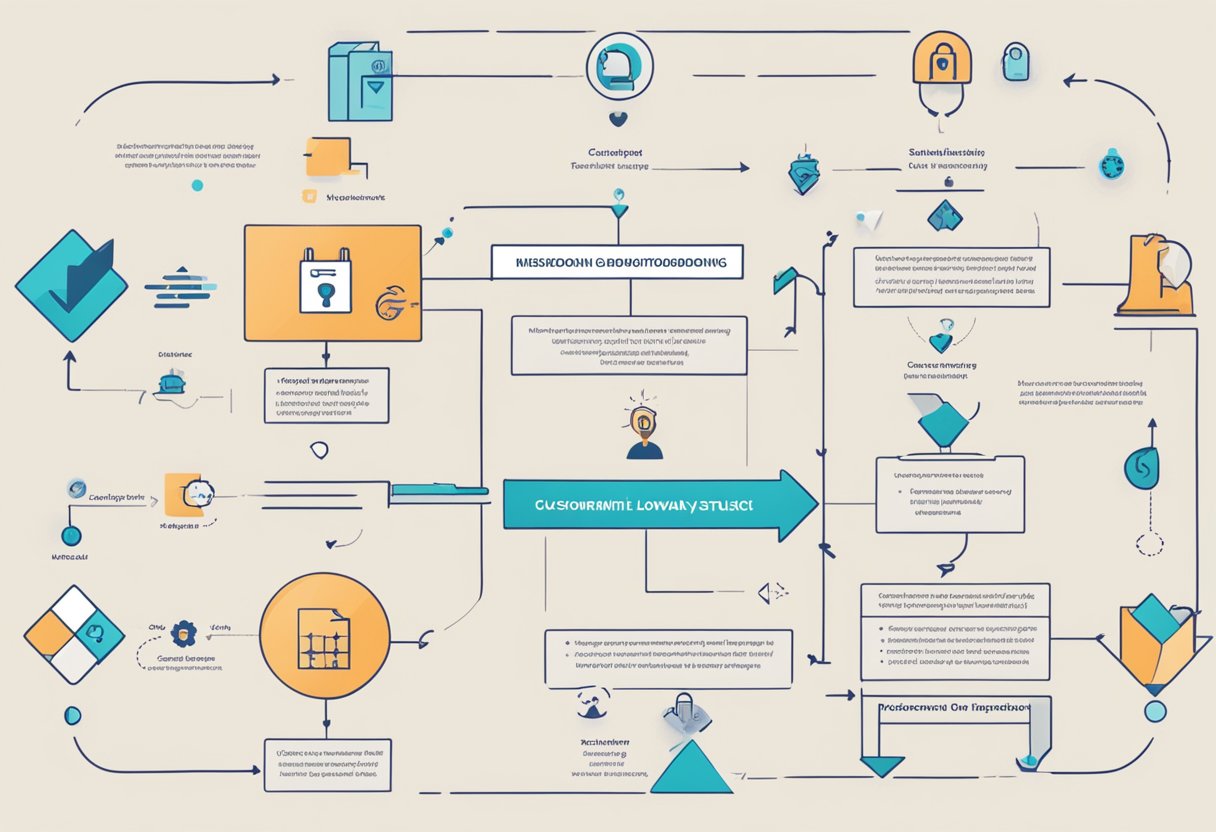
The onboarding process is critical, as it’s the transitional bridge from successful customer acquisition to building lasting loyalty.
The Journey from Acquisition to Loyalty
The first phase of customer loyalty begins the moment a new customer decides to engage with a brand. Effective onboarding guides these customers along a path where they understand and appreciate the value of their purchase, which is essential for transforming a one-time buyer into a lifelong advocate. Following customer acquisition, the onboarding process should be streamlined and user-friendly, focusing on creating positive experiences that foster trust and a sense of being valued. Incorporating clear communication and interactive elements can significantly boost customer engagement and satisfaction.
Customizing Onboarding for Different Customer Segments
Customers come from various backgrounds and experiences, and one size rarely fits all. Businesses need to tailor their onboarding processes to cater to different customer segments. This means collecting data on customer preferences, behaviors, and feedback, which can then inform a customized onboarding strategy. Customization can include personalized emails, targeted walkthroughs, and support options that resonate with specific groups. The use of analytics tools can provide insights that enhance and personalize the customer experience, leading to higher retention and loyalty rates.
- For enterprise customers: Provide in-depth training and a dedicated account manager.
- For small businesses: Offer webinars and access to a resource center.
By paying attention to customer needs from the start, companies lay the foundation for a relationship that’s built to last.
Monitoring and Responding to Customer Churn
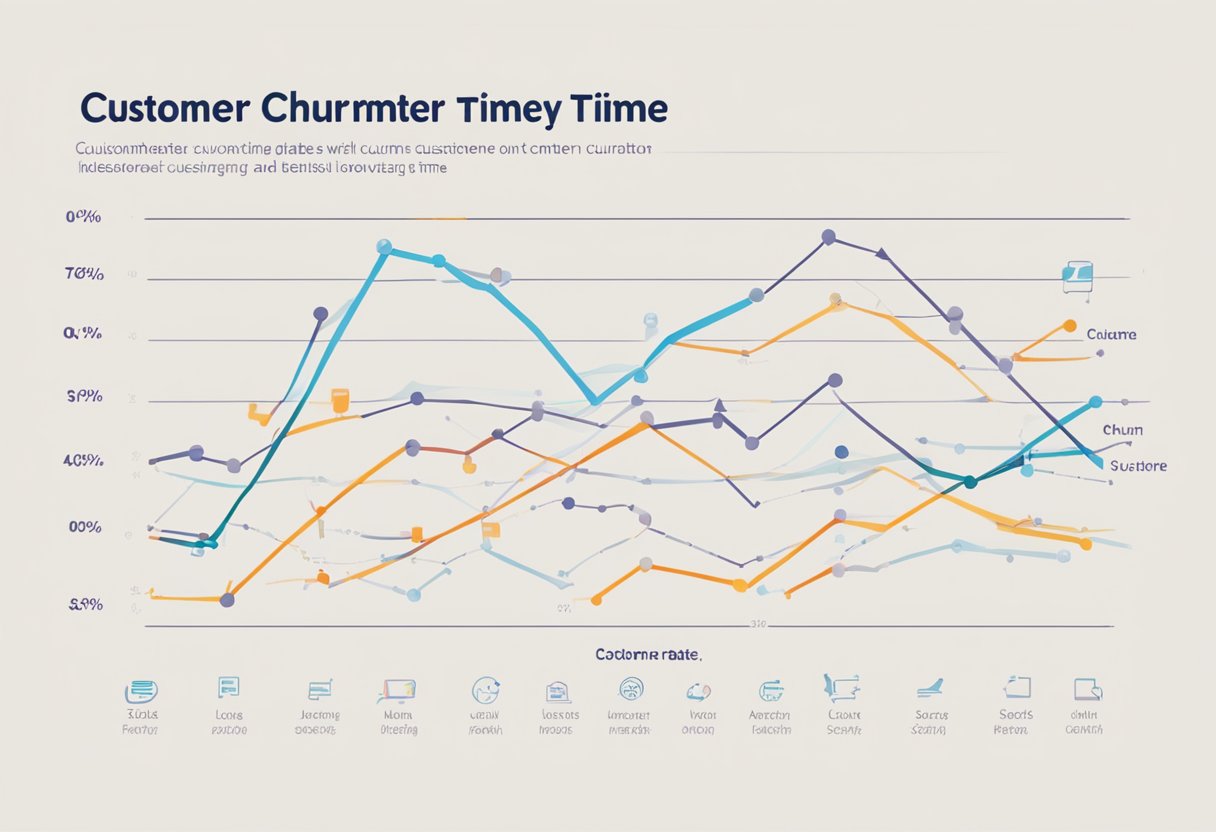
In the dynamic environment of customer relationships, keeping an eye on churn rates is as crucial as any growth strategy. Companies must be adept at identifying why customers leave and how they can prevent it from happening.
Identifying Churn Triggers and Intervention Points
Identifying the key reasons why customers decide to stop using a service or product is the first step in combating customer churn. This could range from poor customer service to pricing issues, or even product satisfaction. Once these triggers are pinpointed, companies need to establish clear intervention points. For example, dissecting the churn mechanics can help in understanding which customer segments may be more prone to leaving and at what point the company might effectively intervene to prevent it.
Re-engagement Strategies for At-Risk Customers
Once at-risk customers are identified, it’s time to employ re-engagement strategies. By using personalized onboarding processes or providing proactive customer service, businesses can create a more tailored experience that might reduce the chance of churn. It’s also advantageous to reward customer loyalty with creative incentives to inspire and retain customers, showing them that their business is valued and appreciated.
Frequently Asked Questions

Understanding customer loyalty and retention is crucial for any brand’s success. Here are some commonly asked questions that can help businesses refine their strategies.
How can a brand effectively measure customer loyalty and retention?
A brand can measure customer loyalty and retention by looking at metrics such as the Customer Retention Rate (CRR) and Net Promoter Score (NPS). Tracking repeat purchase rates and customer lifetime value also offers insights into loyalty levels. To illustrate, Forbes provides a formula to calculate CRR.
What tactics are most successful in turning first-time buyers into repeat customers?
Implementing personalized marketing, creating loyalty programs, and offering excellent customer service are effective tactics. Additionally, thinkific suggests maintaining high product quality and consistent communication as key to nurturing first-time buyers into loyal customers.
Can you suggest some innovative ways to enhance customer loyalty?
One innovative approach is to utilize gamification, encouraging customers to engage more with your brand. Another is to offer customized products or services, adding a unique value that customers appreciate. Partnerships with other brands to provide exclusive deals can also enhance loyalty.
What role does customer service play in maintaining customer retention?
Customer service is pivotal in retention; it serves as the frontline for customer interactions. Effective and empathetic customer service can resolve issues swiftly and leave a lasting positive impression, as emphasized by HubSpot Blog.
What are some common mistakes businesses make that negatively affect customer loyalty?
Common mistakes include neglecting customer feedback, lack of communication, and failing to recognize and reward customer loyalty. These oversights can create a gap between the brand and its customers, leading to decreased satisfaction and loyalty.
How important is personalization in building long-term relationships with customers?
Personalization is critical for nurturing long-term relationships with customers. It demonstrates to customers that they are valued and understood, resulting in increased satisfaction and loyalty. Tailoring experiences and communications to individual preferences shows commitment beyond the transaction.


